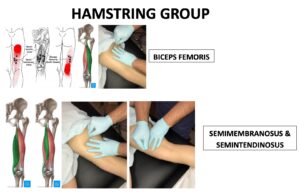by Mitch Hauschildt, MA, ATC, CSCS
In case you are just joining me, I’m in the middle of a blog series on all things Dry Needling. Dry Needling is not usually my first intervention, because it is invasive and has risks, but it is a game changer of an intervention when it is indicated.
In the previous 2 blogs in this series, I covered the basic definition of dry needling and what it is and is not, as well as the likely mechanisms that help us understand why it works. This basic understanding shapes when we use needles and for what conditions.
Dry needling can be used for a variety of ailments and conditions, but there are several things that I have had great success with and lean on needling when I encounter them, so I thought I would take a minute and present a short list of my dry needling “greatest hits”.
- Hamstring strain/tightness/discomfort: This is by far my greatest hit with needles. Needles obviously aren’t going to help a severe strain with muscle tearing, but for a mild strain or irritation or hamstring tightness, a few needles will make an immediate impact in pain and range of motion.
- Posterior tib tendonopathy (shin splints): I frequently needle shin splints to down regulate pain. It is rarely a long term solution because shin splints are rarely caused by an issue in that local tissue, but needles can be a great solution for reducing pain and allowing athletes to keep training at a high level.
- Forearm flexor mass tightness: In my setting, we see a lot of flexor mass issues with our baseball pitchers. It comes from constant use over and over and overloading the local tissue with breaking balls. Untreated, flexor mass tightness will eventually work its way up the chain to the medial elbow, which can be a disaster for a pitcher.
- Posterior shoulder/scapular stabilizer dysfunction: I know this is a general description, but pretty much anything that is problematic between the infraspinatus, supraspinatus, lower trap, rhomboids or subscap tends to respond very well to dry needling. This can be a more dangerous area to needle because you are in the lung field, but if it is performed safely, it can be a game changer for shoulder issues.
- Anterior hip pain: This can be related to a cranky hip flexor or deeper hip pathology. Either way, I have found that dry needling can be a great strategy to reduce pain and tightness in the front of the hip. Of course, this takes some skill to miss important neurovascular structures such as the femoral artery and nerve, but when performed safely, it is a great technique.
There are a variety of other times that I pull out my needles, but this is a list of my favorites. Dry needling can’t cure cancer or reduce anxiety, but it can accelerate the process of feeling and moving better.


Leave a Reply